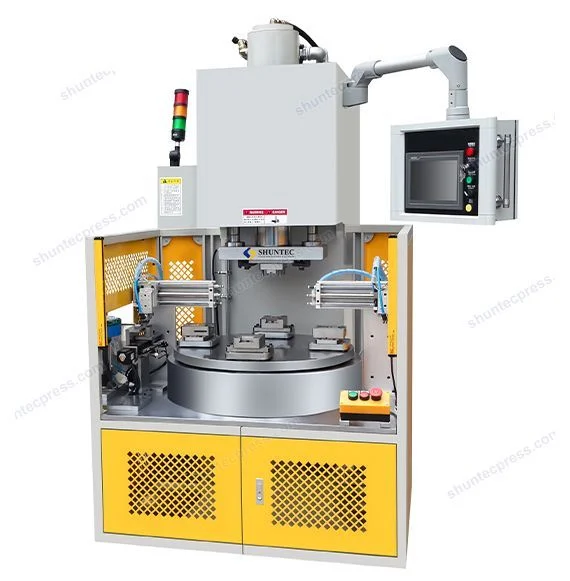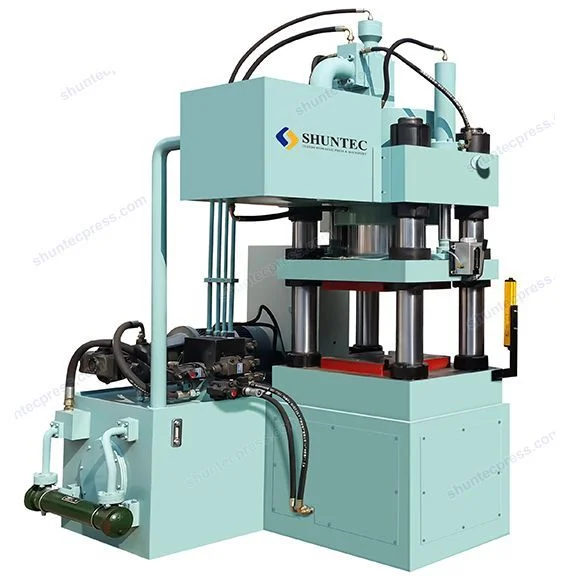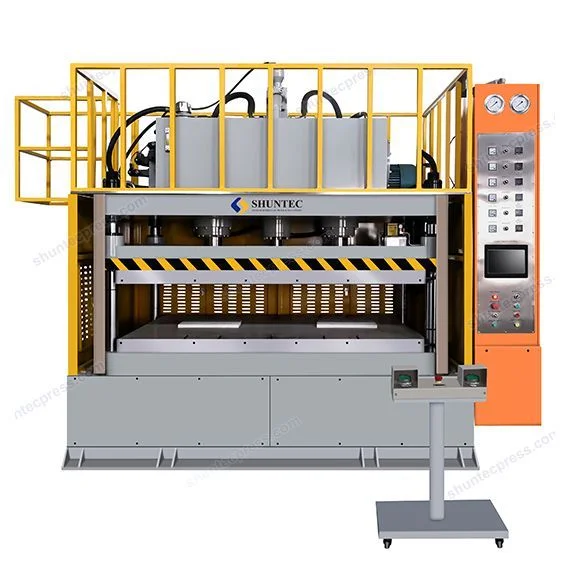Hydraulic presses have become an integral part of various industries, revolutionizing the way manufacturing processes are carried out. Their ability to generate immense force through the use of hydraulic power has made them indispensable in applications ranging from metalworking and fabrication to automotive and aerospace industries. In this article, we will explore the diverse world of hydraulic presses and delve into the different types available, each designed to serve specific purposes with varying frame designs, working principles, and applications.



Overview of Hydraulic Presses
Before we embark on our exploration of the various types of hydraulic presses, let’s establish a fundamental understanding of what they are and how they operate. At their core, hydraulic presses utilize Pascal’s law, which states that when pressure is applied to a fluid within an enclosed system, that pressure is transmitted equally in all directions. This principle forms the basis of hydraulic press operation.
A hydraulic press typically consists of three main components: a hydraulic cylinder, a ram or plunger, and a control system. The hydraulic cylinder is responsible for converting hydraulic energy into mechanical force. It houses the hydraulic fluid, usually oil, and is connected to the ram or plunger. The ram, driven by hydraulic pressure, moves linearly and exerts force on the workpiece or material being processed. The control system manages the flow of hydraulic fluid and regulates the pressure and movement of the ram, allowing for precise control over the pressing process.
Classification of Hydraulic Presses
Hydraulic presses can be classified based on various factors, including frame design, working principles, and applications. Understanding these classifications is crucial in selecting the right hydraulic press for specific industrial requirements. Let’s explore these classifications in detail:
Based on Frame Design
- C-Frame Hydraulic Presses
C-frame hydraulic presses derive their name from the distinctive “C” shape of their frame structure. This design offers several advantages, such as easy access to the work area, versatility in operation, and a compact footprint. C-frame presses are widely used in applications that require flexibility and maneuverability, such as assembly, punching, bending, and straightening processes. Their compact design makes them suitable for both small-scale operations and larger industrial facilities.
- H-Frame Hydraulic Presses
In contrast to the C-frame design, H-frame hydraulic presses feature a sturdy “H” shape for their frame structure. This design offers increased rigidity and strength, making them capable of exerting higher forces. H-frame presses are ideal for heavy-duty applications that require high force and precision, such as deep drawing, stamping, and forging processes. The robust construction of H-frame presses ensures stability and durability even when subjected to extreme pressure and heavy workloads.
Based on Working Principle
- Single-Action Hydraulic Presses
Single-action hydraulic presses are designed to exert force in one direction, typically from the top-down. These presses use hydraulic pressure to move the ram downward and generate force on the workpiece. Single-action presses are commonly used in applications such as blanking, piercing, and simple bending processes. While they offer simplicity and cost-effectiveness, their unidirectional force limits their versatility and flexibility compared to double-action presses.
- Double-Action Hydraulic Presses
Double-action hydraulic presses operate on a different principle, providing force in both the upward and downward directions. The ram in a double-action press can move both up and down, allowing for greater control and flexibility in the pressing process. This design enables tasks such as deep drawing, complex shaping, and multi-stage operations. Double-action presses are often preferred for applications that require intricate forming or involve materials with varying thicknesses.
Based on Application
- Forging Presses
Forging presses play a crucial role in the metalworking industry, where shaping and manipulating metal under extreme pressure are essential. Forging presses can be further classified into open-die and closed-die presses. Open-die presses are used for shaping large workpieces that are not fully enclosed within the die, while closed-die presses enclose the workpiece within the die to achieve precise shaping and minimize material waste.
- Stamping Presses
Stamping presses are extensively employed in various manufacturing processes, particularly in the automotive, appliance, and electronics industries. These presses specialize in the precise and rapid shaping of sheet metal through stamping, piercing, blanking, and embossing operations. Stamping presses can be further categorized into mechanical presses, which utilize mechanical power, and hydraulic presses, which leverage hydraulic force for operation.
- Deep Drawing Presses:
Deep drawing presses are specifically designed for the production of complex components through deep drawing processes. Deep drawing involves the transformation of flat sheet metal into three-dimensional shapes using a combination of blank holder force and the movement of the ram. Hydraulic deep drawing presses offer superior control over the forming process, allowing for consistent and accurate production of intricate components used in various industries, including automotive, aerospace, and consumer goods.
Specialized Hydraulic Presses
In addition to the classifications mentioned above, there are specialized hydraulic presses tailored to specific industrial applications. Let’s explore a couple of these specialized hydraulic presses:
Powder Compacting Presses
Powder compacting presses are utilized in industries such as pharmaceuticals, ceramics, and powdered metallurgy. These presses compress powdered materials, often under high pressure, to form solid objects or components. The powder compacting process ensures uniform density, reduced porosity, and improved mechanical properties of the final product. Hydraulic powder compacting presses offer precise control over the compaction process, enabling the production of high-quality components with consistent results.
Die Spotting Presses
Die spotting presses play a vital role in the mold and die industry. These presses are used for the precise positioning and adjustment of molds and dies during the manufacturing process. Hydraulic die spotting presses facilitate the smooth and efficient alignment of molds, allowing for accurate adjustments and maintenance. By using hydraulic power, these presses ensure controlled and safe movement, minimizing the risk of damage to molds and dies.
Conclusion
Hydraulic presses come in a wide range of types and configurations, each serving specific purposes based on frame design, working principle, and application. The versatility and efficiency of hydraulic presses have revolutionized various industries, enabling precise and reliable manufacturing processes. Whether it’s C-frame or H-frame presses, single-action or double-action presses, or specialized presses like forging, stamping, or deep drawing presses, hydraulic technology continues to contribute significantly to industrial productivity and advancement. By understanding the different types of hydraulic presses available, industries can make informed decisions and select the most suitable equipment for their specific needs, ensuring optimal performance and operational success.
